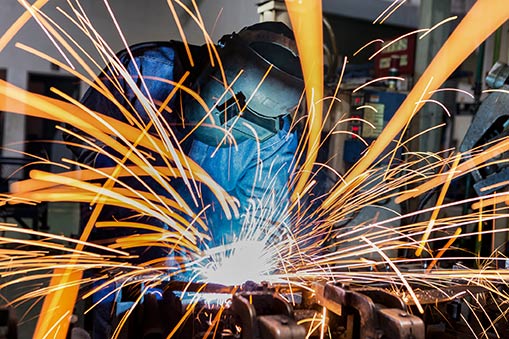.jpg)
.jpg)
The seminar will cover welding processes, welding consumables, design of welded joints, applied welding metallurgy and heat treating, welding quality control, non-destructive testing and major International Welding Codes and Standards such as AWS and API.
Upon the successful completion of this seminar, the participants should be able to:
Inspection engineers, Mechanical Engineers, Electrical Engineers, NDT personnel, quality assurance personnel, auditors, testing laboratory personnel, and maintenance personnel. Further, this seminar is a must for anyone involved in inspection of welding construction, qualifying welders, brazers and operators; or other involved in writing and qualifying welding and brazing procedure specifications; those responsible for reviewing supplier procedures, auditing or reviewing in-house procedures and qualifications; and those who estimate jobs where compliance of ASME code.
This interactive training seminar includes the following training methodologies as a percentage of total tuition hours:-
Day 1
SAW (Submerged Arc)
Classification of Arc Welding Consumables
Day 2
Introduction to Properties of Materials
Fatigue of Welded Structures
Joint Designs
Dissimilar Welds and Weld Overlays
Day 3
Metallurgical Properties of Steel & Heat Treatment
Welding Quality Control
API 1104 and AWS D1.1: History and Structure
ASME Code, History and Structure
Day 4
ASME Section IX: Base and Filler Metal Specifications
ASME Section IX: Selecting and preparing the test coupon for both procedure and Welder qualifications.
ASME Section IX: Writing Welding Procedure Specification
ASME Supplemental Variables – special consideration for notch-toughness
Day 5
Welding Safety
Procedure Specification
Procedure Specification
ASME Brazing Qualifications
ASME Brazing Qualifications (cont’d)
BTS certificate will be issued to all attendees completing minimum of 75% of the total tuition hours of the WORKSHOP.
| Code | Date | Venue | Fees | Register |
|---|---|---|---|---|
| FAC153-01 | 25-01-2026 | Jeddah | USD 5450 | |
| FAC153-02 | 26-04-2026 | Dubai | USD 5450 | |
| FAC153-03 | 27-07-2026 | Kuala-Lumpur | USD 5950 | |
| FAC153-04 | 25-10-2026 | Dubai | USD 5450 |

This training course is designed to give a comprehensive discussion of the subject of Applied Welding Metallurgy with emphasis on practical aspects. The course will concentrate on practical issues whi ...
Providing services with a high quality that are satisfying the requirements
Appling the specifications and legalizations to ensure the quality of service.
Best utilization of resources for continually improving the business activities.
BTS keen to selects highly technical instructors based on professional field experience
Since BTS was established, it considered a training partner for world class oil & gas institution
1st floor, Incubator Buildingو Masdar City, Abu Dhabi, UAE
Sun to Fri 09:00 AM to 06:00 PM
Contact Us anytime!
Request Info